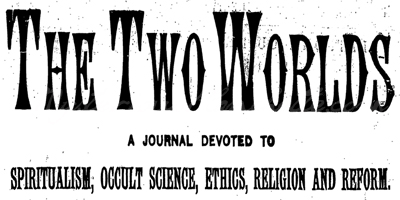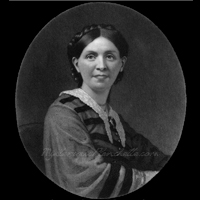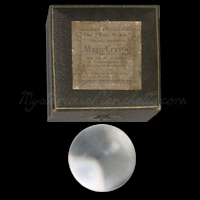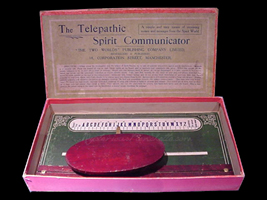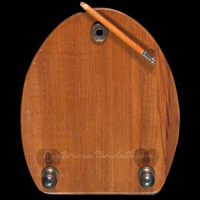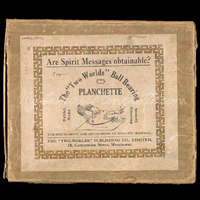The Two Worlds Publishing Company was founded in Manchester in 1887 to produce their flagship periodical, The Two Worlds. From its inception until 1892, the famed actress and Spiritualist Emma Hardinge Britten acted as editor. It claimed to be a journal "devoted to Spiritualist, Occult Science, Ethics, Religion and Reform." When the board of directors forced Mrs. Britten out of her editorial position in 1892, the newspaper continued under the stewardship of E. W. Wallis, and the magazine still exists to this day. During the heydays of the Spiritualist movement, the company flourished, publishing not only the newspaper, but an array of books; treatises answering criticisms of Spiritualism, yearbooks of prominent mediums, Sir William Crookes' Researches into the Phenomena of Spiritualism, and even Hudson Tuttle's Arcana of Spiritualism.
The grueling lecture circuits undertaken by prominent Spiritualists, including Britten and other associates of Two Worlds, taught important lessons on the profitability of catering to those hungry for esoteric knowledge. By the turn of the century, Two Worlds began offering their own brand name spirit-communication tools for aspiring home mediums, including dial plates, gazing crystals, and planchettes.
One Two Worlds founder in particular undoubtedly played a role in this commercialization. Mr. W.T. Braham sat on the publisher's board of directors. While he was a watchmaker and jeweler by trade, he was also behind the "Telepathic Spirit Communicator" dial plate, which he offered from his 392 Stretford Road address in Manchester. Evidence suggests that Mr. Braham's devices were first made and marketed under his firm's Braham & Co banner. But identical boards with very similar packaging-with a Two Worlds maker's mark in place of Braham's (and in one case, even a sticker covering the original address)-are more common than the watchmaker's.
These dial plates are wonderfully ingenious little boards. While not quite up to the same quality standards as Braham's Telepathic Spirit Communicator, they are nonetheless great devices. They consist of an 15-inch long rectangular base board made of cardboard, covered in green paper. Ornate scrollwork decorates the corners, and the alphabet runs the upper length of the board. The board's lower portion contains two thin mahogany strips that form a sort of recessed running rail. An oblong plank of mahogany with a brass pointer acts as the board's planchette, and the base board's rail restricts the planchette's lateral movement, allowing it to move smoothly along the board's length to point to the letters and numbers on the base's upper portion. The cardboard boxes are not as flashy or stylized as Braham's versions, and are covered in red paper, with a white paper label with the board's name, Two Worlds' address, and instructions.
Rebranded planchettes were also offered by Two Worlds, and, like the Braham & Co dial plates, seem to be repackaged Weyers Brothers boards. The comparison and quality is unmistakeable, with the thin yet sturdy round-nosed maple board, double-sided blonde varnish, and high-quality flared ball-bearing castors. The set does not seem to have included the "third wheel" attachment of the Weyers Bros boards, no doubt to keep costs down. Instead, the instructions note that the special thin, chrome-capped pencil can be turned upside down and used as a third leg, facilitating the board's use as a pointer for the enclosed fold-out ouija board. The packaging also differs here, with a fairly simple brown cardboard box with the cryptic message "Are Spirit Messages Obtainable?" on a plain paper label. A border of pre-Nazi swastikas frame the outer edge, with a central engraving of the plank in use. The inner label is similar, with instructions on how to use the planchette either as an automatic writing instrument, or as a ouija pointer.







